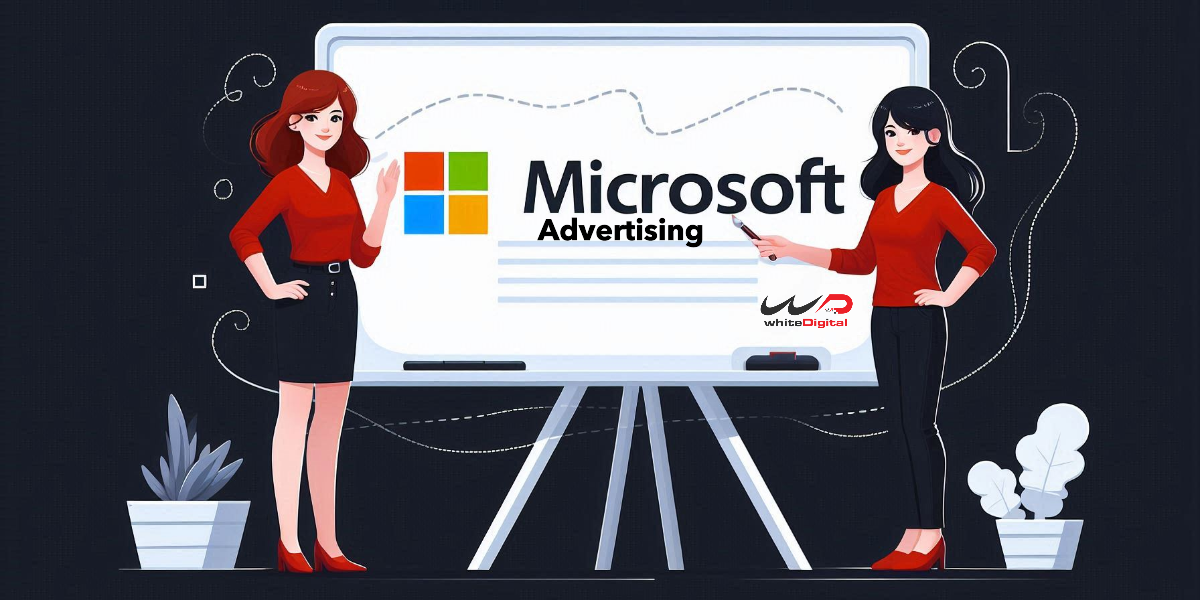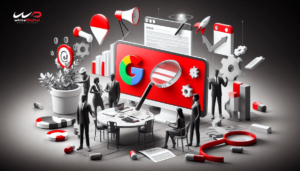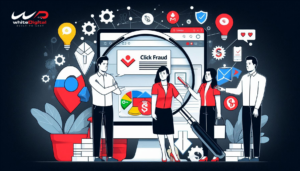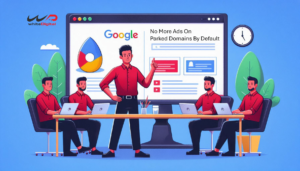Advertisers are constantly seeking effective platforms to reach their target audience. In that run, Google ads have long dominated the online advertising space, but that doesn’t mean other platforms are not doing great. There are other advertising platforms like Microsoft Advertising, that can also be considered as a demanding alternative. Don’t have a clue?
Read our guide which has insights and guidance for advertisers knowing about Microsoft advertising, helping you determine whether it will be right for your client’s business and how you can make the most out of it. Since most of us know about Google ads, let us have a look at the other side of the coin i.e. Microsoft Advertising.
Table Of Contents
- What Is Microsoft Advertising?
- Key Features of Microsoft Advertising
- Benefits of Using Microsoft Advertising
- Setting Up a Microsoft Advertising Campaign
- How does Microsoft Advertising work? Is it worth doing it?
- Pros and Cons of Using Microsoft Advertising
- Microsoft Advertising vs. Google ads
- Is Bing Ads right for your client’s business?
- How much does Microsoft Ads cost?
- What is Bing Ads CPC?
- Conclusion
What Is Microsoft Advertising?
Microsoft Advertising formerly known as Bing ads is a pay-per-click (PPC) advertising platform that allows all types of businesses to display ads across the Microsoft Search Network, including Bing, Yahoo and AOL.
Like Google ads, it enables advertisers to create text ads, shopping ads and display ads to reach potential customers. It also allows advertisers to create ads that appear on websites within the Microsoft Audience Network, which includes sites like MSN, Outlook.com and other Microsoft-owned properties.
Microsoft Advertising is part of Microsoft’s larger ecosystem of business and it has effective marketing tools for better growth of a business.
It offers a simple interface that helps advertisers to create and manage their client’s campaigns. Agencies can also manage services for a larger number of businesses that require more hands-on support.
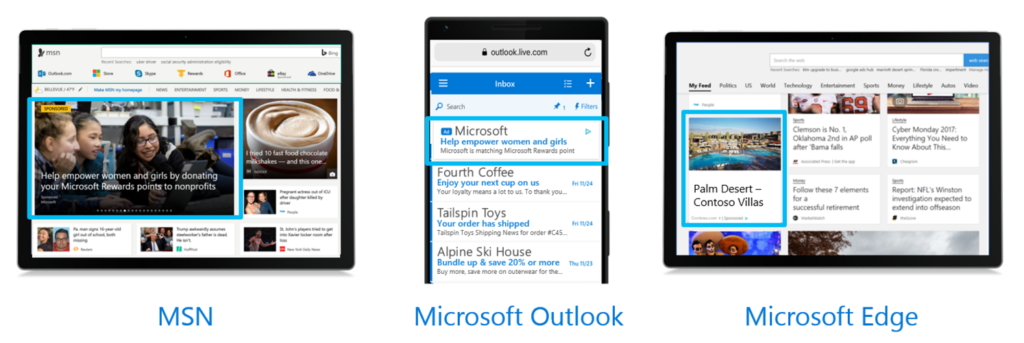
Source: Microsoft Advertising blog
Microsoft Advertising competes directly with Google ads in the digital advertising space. However, it has a smaller market share compared to Google ads and still reaches millions of unique users worldwide, particularly in markets where Bing has a stronger presence.
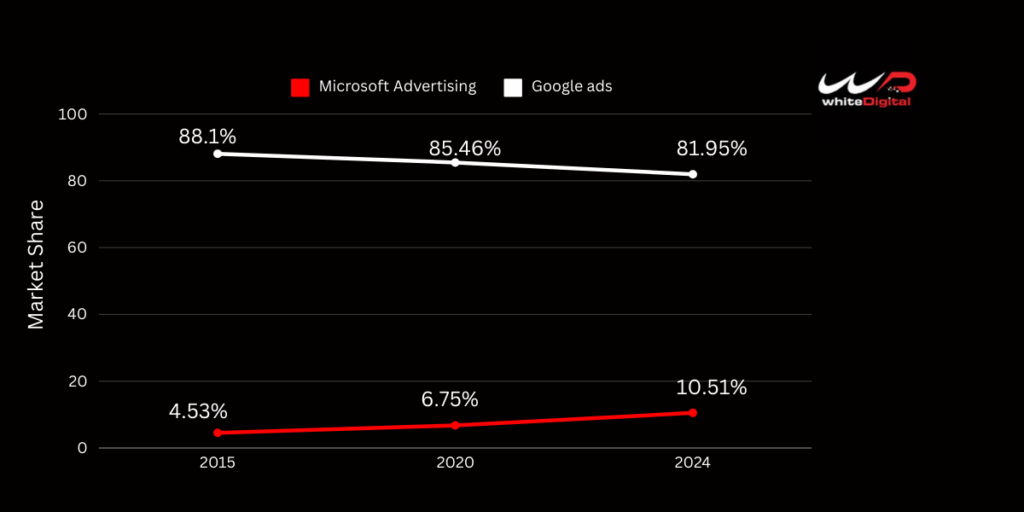
Source: Statista
Here is a graphical representation of the Market Share of a leading Desktop search from the year 2015 to 2024. You can clearly see that Microsoft Advertising has been constant and kept going forward for the past years and Google ads kept losing a constant place.
Understanding Microsoft Advertising as a platform is crucial for some marketers who are looking to diversify their digital advertising. But when it is done right these efforts can go beyond any other advertising platform. That kind of marketer can reach out to a Microsoft advertising expert who has years of experience in the field.
Now that you know what Microsoft Advertising is, let us look into its key features.
Key Features of Microsoft Advertising
1. Diverse Ad Formats
- Shopping Ads: Product listings with images and prices
- Display Ads: Visual ads shown across the Microsoft Audience Network
- Video Ads: Engaging video content displayed on partner sites
- App Install Ads: Specifically designed to promote mobile app downloads
2. Audience Targeting
- Re-marketing: Re-engaging users who have visited your client’s website before.
- In-market Audiences: Reach consumers who are actively searching for products similar to the products of your client.
- Custom Audiences: Create tailored audiences based on your own gathered data that is collected with the help of a supported data management provider (DMP) (like Adobe Audience Manager, Oracle Blukai and LiveRamp).
3. Advanced Targeting Options
- Keyword Targeting: Reach users based on their search queries
- Location Targeting: Target ads to specific geographic areas
- All Device Targeting: Customisable ads for all devices.
- Demographic display Targeting: Allows you to target up on specific age groups, genders, or income levels across the network.
- LinkedIn Profile Targeting: This allows targeting based on LinkedIn professional data.
4. Ad Extensions
- Sitelink Extensions: Add additional links to your ads
- Call Extensions: Display phone numbers directly in ads
- Location Extensions: Show your business address in ads
- Review Extensions: Showcase reviews from Microsoft platform sites
5. Campaign Management Tools
- Campaign Creation Wizard: Simplifies the process of setting up new campaigns
- Automate Rules: Set up specific rules of your choice to automatically adjust your bids and budgets.
- Shared Budgets: This will allow you to allocate a single budget across multiple campaigns.
6. Analytics and Reporting
- Tracking Conversion: You can analyze and monitor all the actions taken on your website closely.
- Performance Reports: Gain insights into campaign performance with detailed reports
- Integration with Google Analytics: Import Google Analytics goals and e-commerce transactions
These are the key features of Microsoft Advertising. Now let us look into the benefits of using these features in your ads.
Benefits of Using Microsoft Advertising
Understanding Microsoft advertising is more important when you want to put forth your work into it. If you are wondering what Microsoft Advertising has to offer, here are some key benefits of using it.
Lower Competition
When you use Microsoft Advertising you will find that there is less competition for keywords when compared to Google ads which would potentially lead to lower costs per click for high-volume keywords and gain better return on investment.
LinkedIn Integration
When using Microsoft Advertising you will gain the ability to target audiences based on LinkedIn professional data. This can be more beneficial to B2B advertisers.
Import from Google ads
If you are someone who has been using Google ads for a longer period and has been finding it difficult to survive there, you can simply migrate to Microsoft Advertising.
You can easily migrate the existing Google ads campaigns, saving your time and effort.
Microsoft Audience Network
Since Microsoft Advertising integrates with all other Microsoft products, you will be able to reach users across premium sites like MSN, Outlook.com and Microsoft Edge which would result in a higher conversion rate.
Potential for Higher ROI
Microsoft Advertising has a lower cost per click when compared with Google ads. This will let businesses achieve more on a lesser budget. In simple terms, lower costs combined with a quality audience can lead to a better return on investment.
Transparent Partner Network
Clear visibility into which partner sites are displaying your ads, with the option to exclude underperforming sites. When an advertiser personalizes the ads with transparent ads, they will be able to
- Check out other transparent ad providers
- The data that is being collected by other ad providers
- The site’s users have visited and are being tracked by another advertiser
Bing AI Integration
As Bing incorporates more AI features, advertisers may benefit from new innovative ad formats and targeting options in the future.
By leveraging these benefits, you can create targeted, cost-effective campaigns that complement your overall digital marketing strategy. If this is new to you and finding it difficult, get help from a Bing ads expert.
Setting Up a Microsoft Advertising Campaign
Now let us look into how to set up a Microsoft Advertising campaign for your client. To make it more convenient let us break down the steps for setting up a Microsoft Advertising campaign.
1. Account Setup:
Begin by creating a Microsoft Advertising account. Visit the Microsoft Advertising website and click “Sign up now.” Follow the prompts to set up your account.
2. Campaign Creation:
Choose the type of campaign that aligns with your business goals. Here is a list of campaigns, you can choose from.
- Audience Campaigns: Target specific audiences across the web using Microsoft AI.
- Performance Max Campaigns: Optimize ads across the entire Microsoft Advertising Network.
- Search Campaigns: Show ads to potential customers searching for your products or services on sites like Microsoft Bing, AOL, Yahoo, and DuckDuckGo.
- Shopping Campaigns: Create product ads based on your Microsoft Merchant Center store’s product feed.
Set your campaign name, budget, location, and language preferences.
3. Ad Groups and Keywords:
Organize your campaign by creating ad groups. Each ad group should focus on a specific theme or landing page.
Use the Keyword Planner (Google or Microsoft Advertising) to find relevant keywords for each ad group. Choose match types (broad, phrase, or exact) to control relevance and search volume.
4. Ad Copy and Extensions:
Craft compelling ad copy for each ad group. Establish and present USPs and make your advertisements relevant to your audience. You will also be able to use all ad extensions to make the most out of our ads.
5. Budget and Bidding:
You should allocate your budget wisely. You can easily set a monthly budget based on your goals and funds. Choose a bidding strategy (manual or automated) and set your bids for keywords.
This is how you should set up your Microsoft Advertising campaign.
How does Microsoft Advertising work? Is it worth doing it?
As we said earlier, Microsoft Ads is a pay-per-click (PPC) advertising platform that allows all types of businesses to display ads on the Bing search engine across its partner networks.
Here is a brief understanding of how it works and some thoughts on its potential value:
- When you use Microsoft Advertising, your ads will display on search engines like Bing, Yahoo, DuckDuckGo, and other partner search engines within Microsoft’s Network.
- More detailed reports and data visuals
- LinkedIn targeting can be used to get hold of an audience.
Is it worth doing Microsoft Advertising?
- Microsoft Advertising (Bing Ads) is generally worth doing for most businesses that don’t have a better reach or for start-ups.
- The primary reason why you should choose it is diversification. Google dominates the search market but that doesn’t mean that your ads on Bing mean nothing. If you ignore Microsoft Advertising means that you are missing out on a significant portion of potential customers.
- Bing has a market share of around 6-7% globally and higher in certain markets like the US (around 30% when combined with Yahoo). This means that there are millions of searches daily that your competitors might be capitalizing on if you’re not present.
- Bing often offers lower cost-per-click rates due to less competition. This can lead to a better return on investment, especially for small to medium-sized businesses with limited budgets.
- The platform tends to attract older, more affluent demographics, which can be valuable for certain industries.
- Bing’s integration with Microsoft products like Windows, Office and Edge browser provides unique targeting opportunities. For B2B companies, this can be particularly advantageous given Microsoft’s strong presence in the business world.
These are the reasons why you should opt for Microsoft Advertising. But remember the key is to test, measure and optimize your campaigns that can deliver a positive ROI for your client’s business.
Pros and Cons of Using Microsoft Advertising
Your ads should be based on the business goals on what you need to achieve. For that, you should know the nook and corner of it. Here are the pros and cons of using Microsoft Advertising.
Pros:
- Bing Ads has less competition compared to Google ads, which leads to lower costs per click.
- Generally higher click-through rates for certain demographics.
Cons:
- Smaller market share compared to Google
- Potentially lower overall traffic volume
- May require separate campaign management from Google ads
These are some of the pros and cons of using Microsoft Advertising for your client’s account. Now let us compare the benefits of Microsoft Advertising and Google ads.
Microsoft Advertising vs Google ads
Here is a comparison between Microsoft Advertising and Google ads based on certain aspects.
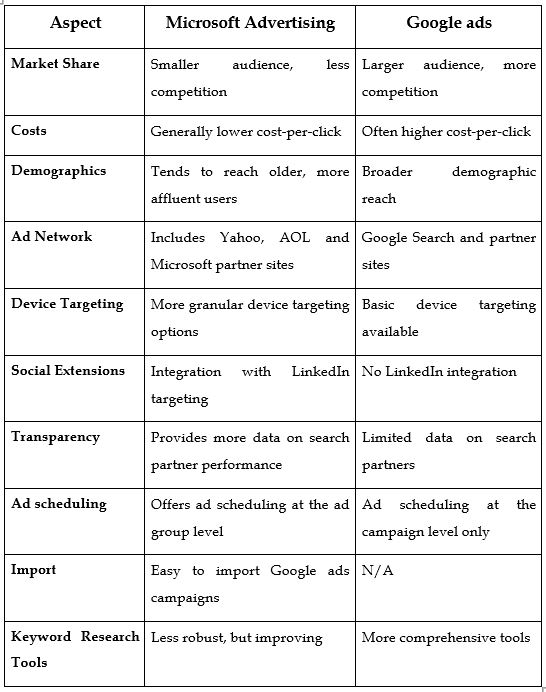
Above are some general differences, but the effectiveness of each platform can vary depending on your specific business, target audience, and campaign goals.
It is advisable to test both platforms to see which performs better for your client’s particular needs. This will give you the most relevant data for making decisions about budget allocation and platform focus. If you are not sure which one to choose, contact a White Label Digital Marketing expert.
Is Bing Ads right for your client’s business?
To determine if Bing Ads is right for your client’s business, consider the following factors:
Target audience demographics
Bing tends to attract an older, more affluent audience. If this aligns with your target market, Bing Ads could be beneficial.
Industry relevance
Some industries perform particularly well on Bing, such as finance, travel and automotive. Research if your industry has good traction on Bing.
Budget constraints
With typically lower CPCs, Bing can be a good option if you have a limited advertising budget.
Geographic targeting needs
If your business targets regions where Bing has a significant market share (like the US), it could be more relevant.
Device targeting requirements
If you need granular device targeting, Bing offers more options than Google.
Current Google ads performance
If you are already using Google ads successfully, expanding to Bing could provide incremental growth.
Resources for management
Make sure to have the time and expertise to manage another ad platform effectively. You can seek help from an expert too.
But to make an informed decision, it is advisable to,
- Analyze your current customer base and see if it aligns with Bing’s user demographics.
- Start with a small test campaign on Microsoft Advertising to evaluate performance.
- Compare results with your other advertising channels.
A balanced approach often involves using multiple platforms to reach your target audience effectively. Now you know whether to use Microsoft Advertising for your client’s business. So, now you might be wondering how much it would cost.
How much does Microsoft Advertising cost?
Microsoft Advertising costs can vary widely depending on several factors. Here’s an overview of the costs associated with Microsoft Advertising and information about their Cost Per Click (CPC),
- No minimum spent: You can start with any budget you are comfortable with.
- Pay-per-click model: You only pay when someone clicks on your ad.
- Budget control: You set daily or monthly budgets to control spending.
- Variable costs: Actual costs depend on factors like:
- Your industry
- Competition for keywords
- Ad quality and relevance
- Targeting options used
- Additional costs: Consider potential expenses for:
- Ad creation (if outsourcing)
- Management tools or services
Microsoft Advertising CPC
So now you know everything about Microsoft Advertising, yet there is one more topic to cover and that is the Microsoft Advertising CPC. Let us look a little deeper into Microsoft Advertising CPC in the form of Q & A.
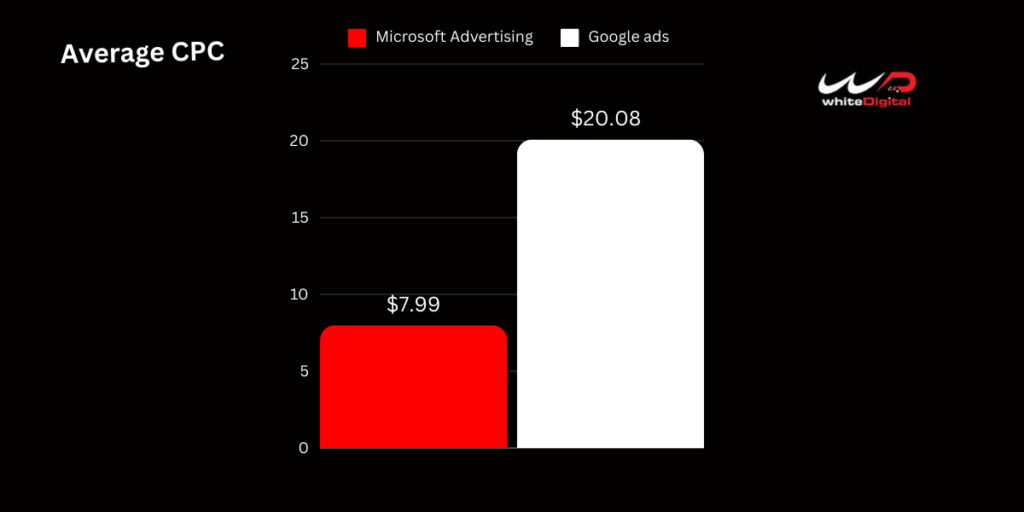
Source: Report Garden
According to Report Garden, when comparing the average CPC of Microsoft Advertising and Google ads, the CPC of Google ads is higher than that of Microsoft Advertising. Even though Microsoft Advertising had a low CPC the potential to reach the customers is high.
1. What is the Average Microsoft Advertising CPC?
Generally, ranges from $0.50 to $9.00.
2. What are the industries that can benefit?
Some industries (e.g., legal, finance) may see higher CPCs, potentially $5 or more. Whereas less competitive niches might have CPCs under $0.50.
3. What are the Factors that affect CPC?
- Keyword competitiveness
- Ad position
- Quality Score of your ads
- Targeting options used
4. What is the rate when compared to Google?
Bing Ads CPCs are often 20-30% lower than Google ads for similar keywords.
5. Does it have Bid control?
You can set maximum bids for your keywords, giving you control over potential CPCs.
6. How to get a more accurate estimate for your specific business?
1. Use Microsoft Advertising’s Keyword Planner tool to research potential keyword costs.
2. Start with a small test campaign to gauge actual costs in your niche.
3. Monitor and adjust your bids and targeting to optimize costs over time.
Remember, while CPC is important, it is more crucial to focus on the overall return on investment (ROI) of your advertising spend. For a beginner, it is best if you consider the hand of a Microsoft Advertising expert.
Conclusion
Microsoft Advertising is a powerful platform to reach your target audience and get better conversions but it depends on the individual needs and what you expect from the platforms. We hope the above-given information helps you make an informed decision for your marketing. If you have queries, feel free to call us.

